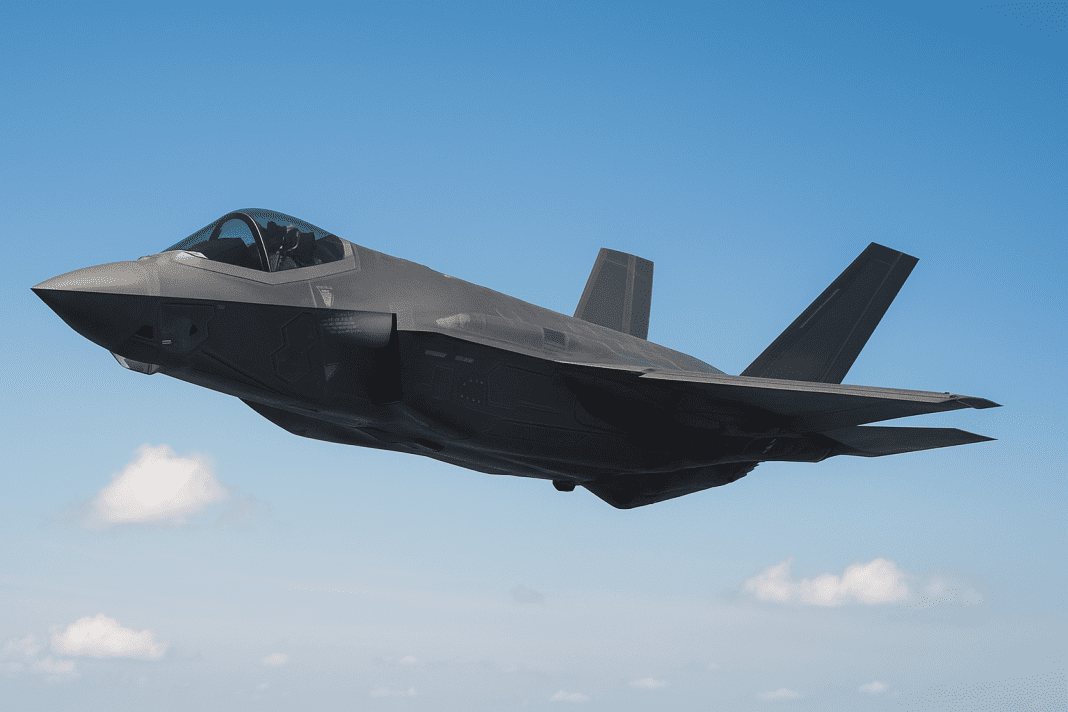Lockheed Martin’s F-35 fighter jet, already a dominant 5th-generation aircraft, is being explored for a radical F-35 upgrade that could bring it closer to 6th-generation capabilities. This concept, informally called the F-35 “Ferrari,” aims to boost the aircraft’s performance without building a completely new jet. By integrating advanced software, artificial intelligence, and cutting-edge sensors, the F-35 could perform in ways previously thought possible only for new-generation aircraft.
Revolutionary F-35 Upgrade Transforming a Classic Fighter
There is strong precedent for upgrading existing aircraft to achieve significant performance improvements. The B-2 stealth bomber, F-22 fighter, and F-15EX have all undergone major enhancements that extended their operational relevance. These F-35 upgrades included re-engining, updated avionics, improved weapons systems, and advanced stealth technologies. Even older aircraft like the B-52 bomber have been modernized with new internal weapons bays, communication systems, and electronic warfare equipment.
Lockheed’s F-35 “Ferrari” concept focuses on keeping the existing airframe while adding next-generation technology. These upgrades could include AI-assisted computing, advanced heat-signature reduction, enhanced situational awareness, and the potential addition of lasers and other next-generation weapons. These F-35 upgrades aim to transform the jet into a far more capable platform without needing to develop a new aircraft from scratch.
US stations F-35 aircraft in Puerto Rico amid wider military presence in Caribbean
The F-35’s current capabilities already surpass many 4th-generation fighters. With these new enhancements, the aircraft could gain a wider sphere of influence in the battlespace, operate at longer ranges, and engage multiple threats simultaneously. This approach reflects a shift in military aviation, where software and sensors often drive the most significant improvements rather than just the airframe itself.
Software and Sensor Advancements Driving F-35 Upgrade
Software upgrades have long been central to the F-35’s operational edge. The upcoming Block 4 software update is particularly significant, as it integrates new weapons such as the Stormbreaker and the Advanced Anti-Radiation Guided Missile – Extended Range (AARGM-ER). Stormbreaker allows mid-flight course adjustments and datalink-enabled tracking at ranges up to 40 nautical miles, while AARGM-ER enhances the F-35’s ability to detect and destroy enemy air defenses from extended distances.
The F-35’s advantage lies in its sensor fusion technology. This system combines information from multiple sensors and platforms into one actionable picture, giving pilots unmatched situational awareness. Military exercises have shown that F-35 pilots can detect and neutralize groups of older aircraft while remaining undetected.
🇨🇭 Swiss outrage erupts as Trump slaps record 39% tariffs, shaking F-35 jet deal
A “Ferrari” F-35 upgrade could amplify these capabilities even further. AI could help pilots integrate data more efficiently, allowing them to process information faster. Enhanced sensors could help pilots detect targets at longer ranges, and upgraded fire control systems could allow them to deploy entirely new weapons. These F-35 upgrades would allow the aircraft to achieve functions approaching 6th-generation standards, bridging the gap between current and next-generation platforms.
The integration of advanced AI and networking would also allow the F-35 to operate more effectively in contested environments. By connecting with other aircraft and ground or naval systems, the upgraded F-35 could coordinate strikes, share sensor data, and prioritize targets more efficiently than ever before.
Pioneering Crewed-Uncrewed Teaming
The F-35 has been a leader in crewed-uncrewed teaming, allowing it to control drones directly from the cockpit. Experiments have shown the F-35 can coordinate with drones such as the Valkyrie, a concept that forms the basis for “loyal wingman” strategies. These strategies involve a single pilot controlling multiple uncrewed systems to expand situational awareness and firepower without additional personnel.
U.S. warns of alliance fallout as Canada weighs F-35 fighter jet deal
Such capabilities are fundamental to planned 6th-generation Collaborative Combat Aircraft (CCA). With the F-35 “Ferrari” F-35 upgrade, this fighter could operate seamlessly with multiple drones and collaborate with more advanced crewed aircraft. Networking capabilities could allow real-time data sharing, target tracking, and coordinated attacks within a single mission.
By combining enhanced sensors, AI-driven software, upgraded weapons, and crewed-uncrewed teaming, the F-35 upgrade could provide performance levels previously only associated with 6th-generation aircraft. This approach emphasizes transforming an existing, proven airframe into a more capable and future-ready platform. Each F-35 upgrade step—software, sensors, weapons, and networking—reinforces the jet’s role as a central element in modern aerial combat operations.

